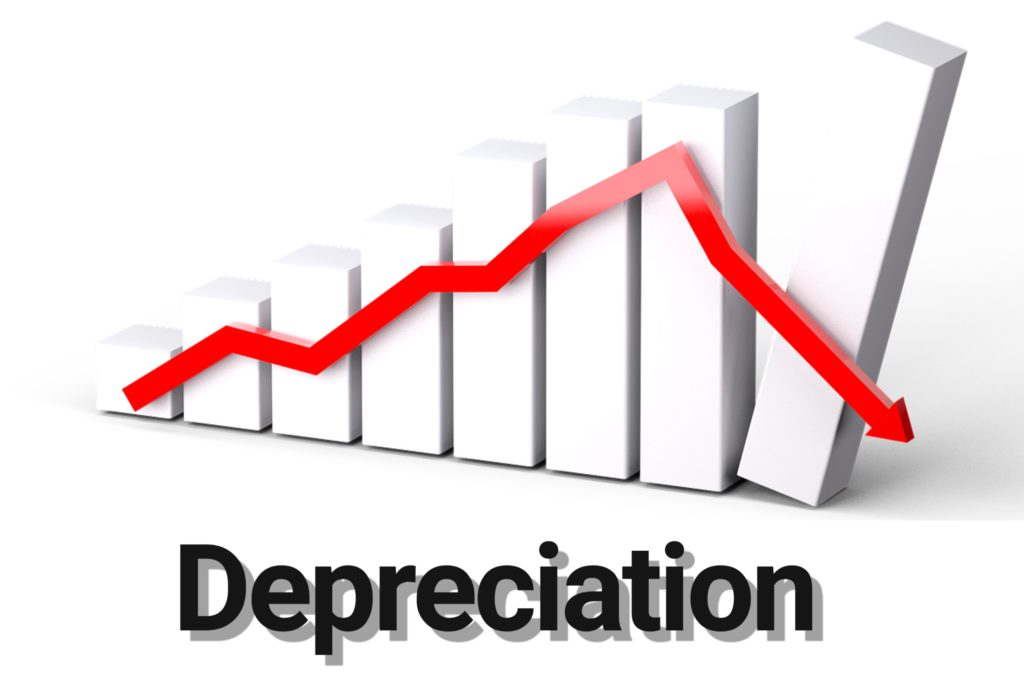
The asset a company purchases in the form of machinery, equipment, etc., is considered a business expense and tax-deductible. The asset must be a fixed asset like buildings, machinery, equipment, furniture, etc. The cost of that asset is divided over the years evenly of its useful life by using depreciation methods. Different depreciation methods help calculate the annual depreciation cost that gives the tax-deductible amount.
Depreciation is the value of an asset over its useful life period. It is essential to know and understand the depreciation methods to calculate an asset’s depreciation to know what amount is tax-deductible.
In order to calculate depreciation, you have to follow these steps:
- Asset’s useful life: useful life of an asset is for the time an asset is productive, and it depends on the nature of an asset. You will need guidance from an accountant, who will let you know about an asset’s useful life.
- Salvage Value is an asset’s value after its useful life ends. The lowest amount which the company considers to sell the asset is the salvage value.
- Cost of Asset: includes all costs for purchasing the asset, such as shipping charges, taxes, setup, etc.
Annual Depreciation = Cost of Asset – Salvage Value
The useful life of Asset
For example, a company acquires an asset costing $10,000, its salvage value of $5,000, and its useful life is 20 years. Then we say that its annual depreciation is $250 ($10,000 – $5,000/20).
Here are the topics we will cover in this article:
Methods of Depreciation:
The useful lifespan of an asset can range from three to 20 years for personal property, 15 to 20 years for land improvements, and are fixed at 27.5 years for residential real estate and 39 years for business real estate. The IRS has information about the depreciation and lifespan of assets.
The IRS uses the Modified Accelerated Cost Recovery System (MACRS) to calculate depreciation by the Straight-line method and declining balance method.
Straight-line Depreciation:
The straight-line depreciation method is the most commonly used and easiest way to calculate depreciation. In this method, the depreciation calculated is evenly divided over the useful years, with the same depreciation every year.
Formula:
Annual Depreciation Cost = Cost of Asset – Salvage Value.
The useful life of Asset
Double declining Depreciation:
The double-declining depreciation method calculates the asset’s cost in the early years’ timepan, which means that the asset is more useful or productive in its early years than in the end. It also results in a larger amount, twice the depreciation, than in other depreciation methods. This is a more complex and difficult method to find the cost; that’s why the straight-line method is used instead.
Formula:
Periodic Depreciation Expense = Beginning book value x Rate of depreciation
Sum of the Years Digits Depreciation:
In this method, the expected useful life years are divided by the sum of the year’s digits and multiplied by the depreciable cost in order to calculate its depreciation.
It is known as the accelerated depreciation method. A higher expense occurs in the early years, whereas the expense decreases in the ending years.
The depreciation formula for the sum-of-the-years-digits method:
Depreciation Expense = (Remaining life / Sum of the years digits) x Depreciable Cost(Cost – Salvage Value)
Units of Production Depreciation:
The units-of-production depreciation method depreciates assets based on the total number of hours used or the total number of units to be produced by using the asset over its useful life.
This assignment makes the method very useful in assembly for production lines. The calculation does not base on the number of years rather, it is based on the output capability of the asset.
Formula:
Depreciation Expense = (Number of units produced / Life in a number of units) x (Cost – Salvage value)
When the asset reaches its useful life?
An asset’s useful life is the timespan where until the asset is productive for the business, and the business uses its depreciation in record books as tax leverage. It is not necessary that the asset stops working once its useful life ends, but if the useful life ends in the books, then it cannot be expensed, but some businesses keep recording it as a depreciated expense until it is replaced or scraped off.
Accumulated Depreciation:
Accumulated depreciation is the amount that is placed against depreciation expense since the purchased asset is put into service. The accumulated depreciation is considered a special kind of asset, and when an asset is credited, it means it has a negative balance, which will ultimately decrease the value of that asset. It is also known as a contra-asset account.
For more useful information, browse the resources guide today!sn
Related Articles:
- How to calculate withholding tax?
- Cash vs. Accrual Accounting: What’s the Difference?
- What is an Excise tax?
- How to calculate job costing?
- What is Liability in Accounting?
- What Is a Periodic Inventory System and How Does It Work?
- What is a good liquidity ratio?
- What is a Straight Line Depreciation? | Explanation & Example
- Tax Depreciation: The Impact of Depreciation on Taxes
- Is Accumulated Depreciation a Current Asset?
